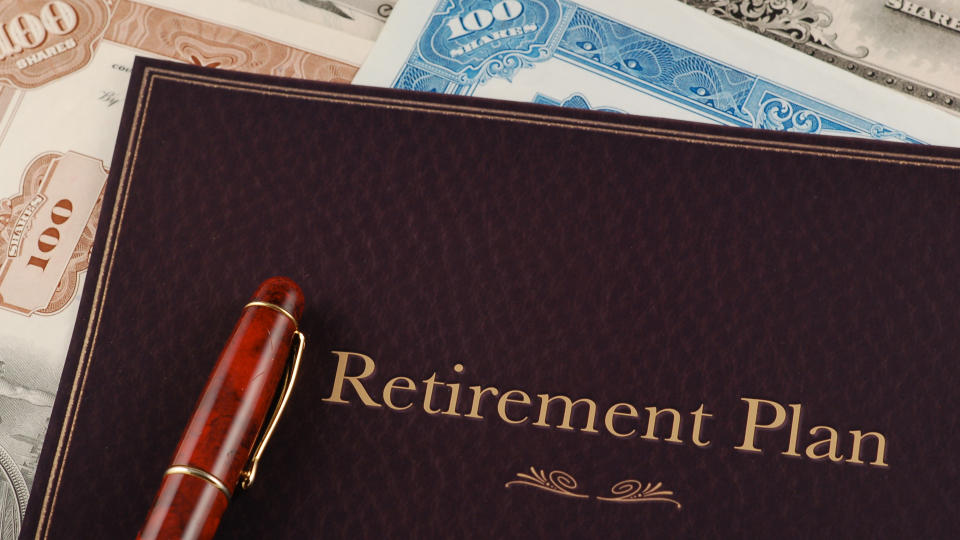Here’s When You Need To Adjust Your Portfolio’s Risk Level Before Retirement

Saving for retirement is not something you can do passively and forget about. Your retirement strategy depends largely on where you are in life, your age, your ability to earn income and your plans for retirement.
Check Out: 9 Strategies Americans Are Using To Minimize the Taxes They Pay on Retirement Savings
Find Out: The Surprising Way You Can Get Guaranteed Retirement Income for Life
Your age helps determine the level of risk you take in your investments, among other factors. A person who is young, with many working decades ahead of them, will have an approach to their retirement investing that is vastly different from someone who is close to retirement age.
Retirement experts explain how and when you need to adjust your retirement portfolio’s risk level before retirement.
Retirement Planning: Whether you're planning for retirement, dealing with a significant life event or simply looking to make smarter financial decisions, a financial advisor can offer the expertise and guidance you need. Here are some compelling reasons why you should consider a financial advisor -- even if you're not wealthy.
Don’t Make This Mistake Close to Retirement
You really need to begin to play it safe the closer you get to retirement, according to Chris Urban, CFP, retirement income certified professional and founder of Discovery Wealth Planning.
“One of the bigger mistakes I see [in] people who are nearing or perhaps just into retirement is that they do not position enough of their assets in safer, less volatile investments well before retiring,” he said.
This may include such accounts as high-yield savings accounts and/or CDs, as well as other forms of investing, he explained.
Build Up a Reserve Three to Five Years Prior to Retirement
When you start closing in on retirement, within three to five years, “You should begin building up a reserve account with multiple years of living expenses,” Urban said. “Take a certain amount each year and contribute it to this account. This largely removes the market-timing risk as you withdraw funds over a multi-year period, once your retirement begins.”
Furthermore, this reduces your exposure to sequence-of-return risk early in retirement. In other words, you can withdraw from this reserve account as needed for living expenses should the market, and your investments, underperform.
Discover More: How Long $1 Million in Retirement Will Last in Every State
This Is the Decade for Growth and Accumulation
According to Taylor Kovar, CFP and founder and CEO at 11 Financial, your 20s are when you should be primarily focused on long-term growth and accumulation. Here, you generally have a higher risk tolerance due to a longer time horizon.
“Emphasize equity-heavy investments (stocks) for potential higher returns over time. Consider a mix of domestic and international funds,” he said.
Dalton Tigner, a finance professional and partner at Tigner Financial, also recommended 100% equities for long-term growth at this stage of life.
This Is When You Should Balance Growth With Stability
When you hit your 30s and 40s, you should maintain a diversified portfolio with a mix of stocks and bonds, Kovar urged.
As you get closer to retirement age, he said, “Start incorporating more conservative investments to reduce volatility.”
Tigner offered a good rule of thumb: Your age is the percentage in fixed income, and the rest goes in equities. “For example, at 45 aim for 45% fixed income and 55% equities,” he said. “This helps reduce volatility while still achieving growth.”
When To Focus on Capital Preservation and Lower Risk Tolerance
As a general rule, in your 50s and early 60s, you want to lower your risk tolerance as retirement nears, Kovar said, but not to the point that you’re reducing your gains significantly.
“Shift towards more conservative investments like bonds and stable dividend-paying stocks,” he said. “Consider capital preservation and income generation as primary goals.”
What To Do When Approaching Retirement
When you’re really on the narrow runway toward retirement, you want to have the lowest risk tolerance to protect your accumulated savings, Kovar said.
Here, Tigner suggested, “Aim for 70% to 80% in fixed income and cash, and 20% to 30% in equities. The closer to retirement, the more conservative you need to be to avoid losing money you’ll rely on in retirement.”
However, he did say that some equities are still important for hedging against inflation. Review and rebalance your portfolio regularly based on your financial goals and risk tolerance, Tigner suggested.
“Transition to a more income-oriented portfolio with a significant allocation to stable assets like bonds, CDs and possibly annuities,” he said.
This helps ensure your portfolio aligns with your anticipated retirement income needs and risk capacity.
Always Do These Things
No matter where you are in your retirement journey, Kovar recommended you factor in potential longevity to ensure your investments can sustain your retirement years.
You also should maintain a diversified portfolio to mitigate risk across various asset classes and market conditions.
And, Kovar added, “Periodically reassess your portfolio’s risk level and make adjustments based on changing financial circumstances and market conditions.”
Additionally, if you find any of these steps confusing or challenging, be sure to engage a financial advisor to help you find the best strategy that works for you. Be careful to pick an advisor who doesn’t charge high fees, so you don’t fritter away money.
More From GOBankingRates
This article originally appeared on GOBankingRates.com: Here’s When You Need To Adjust Your Portfolio’s Risk Level Before Retirement